IES MASTER GATE MATERIAL
SOIL MECHANICS
GATE – PSU – IES – GOVT EXAMS – STUDY MATERIAL
FREE DOWNLOAD PDF


CONTENTS
- Origin of soil and Soil water Relationship
- Classification of Soil
- Clay Mineral And Soil Structure
- Soil Compaction
- Effective Stress, Capillarity and Permeability Seepage through Soil
- Vertical Stresses
- Compressibility and Consolidation
- Shear Strength of Soil
- Stability of Slopes
- Earth Pressure and Retaining walls
- Shallow Foundation Deep Foundation
- Soil Exploration
- Expansive Soils
INTRODUCTION :
DEFINITION OF SOIL : The term “soil” in soil engineering is defined as an unconsolidated material, composed of solid produced by the disintegration of rocks. The void space between the particles may contain air both. The soil particles may contain organic matter. DEFINITION OF SOIL MECHANIC The term Soil Mechanics’ was coined by Dr. Karl Terzaghi in 1925. who is also known Father of Soil Mechanics. According to Terzaghi, Soil mechanics is the application of the laws of mechanics and had to engineering problems dealing with sediments and other unconsolidated accumulations particles produced by the mechanical and chemical disintegration of rock. regardless of when not they contain an admixture of organic constituents Soil mechanics is, therefore, a branch of mechanics which deals with the action of forces und with the now of water in soil RINTTON OF SOIL ENGINEERING Soil engineering is an applied science dealing with the applications of principles of soil me to practical problems. It has a much wider scope than soil mechanic as it deals with all engg problems related with soils. It includes site investigations, design and construction of four earth-retaining structures and earth structures
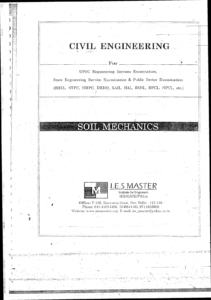
DEFINITION OF GEOTECHNICAL ENGINEERING : Some times geotechnical engineering is used synonymously with soil mechanics. Erosion Phase The cycle starts with the erosional phase in which there of exposed rock by weathering processes. The weathering processes may be Physical weathering(I) Chemical weathering Physical Weathering The physical weathering process may be(a) erosion of rocks caused by the action of wind, water, glaciers disintegration caused by alternate freezing and thawing in cracks in the rock. o The resulting soil particles retain the same composition as that of parent rock. Particles of this type are described as being of bulky” form. Their shape can be indicated by terms such as angular, rounded. fat and Elongated-Gravel and sand fall into this group. The structural arrangement of these are described as single grain. Each particle is in dire contact with adjoining particle, without their being any bond between them. a State of the particle can be described as dense, medium dense or loose, depending or how that are packed together Chemical Weathering the action chemical process results in changes in the mineral form in parent rock due to water (especially if it contains acids or alkalis, oxygen and CO2
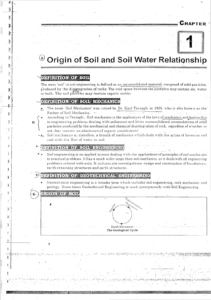
Chemical weathering results in the formation of group of crystalline particles of colloid 2 u) known as clay mineral. . Most clay mineral particles have “Plate-like form having a high specific surface (i.e. high area to mass ratio) with the result that their structure is influenced significantly by serine if the products of rock weathering are still located at the place where they originated. the called residual s Most residual soils are weakly bonded; they have widely varying void ratio. They contain rock fragments of varying sizes. Residual soils have better engineering property(b) Transportation/Deposition in the second phase, the fragmented material is transported by agents such as wind. wat to new locations Soil transported from their origin by wind, water, ice or any other agency and has been de is called Transported soil. They have generally small grain sizes. large amount of pore Characteristics of soil such as Size of particle, Shape and roundness Surface texture and of shortening are influenced by the agency of transportation.
8 574 116% According to the transporting agency, soils are classified as: Alluvial deposit deposited by rivet water. Lacustrine deposit deposited.by still water like lakes. Marine deposit deposited by sea water. eonian deposit transported by wind. Glacial deposit Transported by ice Air transported soil have small size (20-50 and they are homogeneous, highly porous and friable. Loess is an Aeolian soil. They are formed in arid and semi-arid regions Alluvial soils are generally rounded and have considerable shorting. According to transporting agency soils are classified as: water transported soils Flowing water is one of the most important agents in transportation of soils. Swift running water carries a large quantity of soil either in suspension or by rolling along the bed.
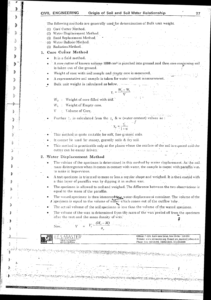
Water erodes the hills and deposits the soils in the valleys. The size of the soil particles carried by water depends upon the velocity. The swift water can carry the particles of large size such as boulders and gravels. With a decrease in velocity, the coarse particles get deposited. The finer particles are carried further downstream and are deposited when the velocity reduces. A delta is formed when the velocity, slows down to almost zero at the confluence with a receiving body of still water, such as a lake, a sea or an ocean Glacier-Deposited Soils Glaciers are large mass f ice formed by the compaction of snow. As the glaciers grow and move they carry with them soils varying in size from fi me grimed to huge boulders Soils get mixed with the ice and are transported far away from their original position. Drift is a general term used for the deposits made by glaciers directly or indirectly Deposits directly made by melting of glaciers are called till. Deposits of glacial till are generally well-graded and can be compacted to a high dry density. The have generally high shearing strength. gravity-deposited soils Soils can be transported through distances under the action of gravity. Rock fragments and s masses collected at the foot of the cliffs or steep slopes had fallen from higher elevation under t action of the gravitational force. Colluvium soils, such as talus, have been deposited by t gravity. Talus consists of irregular, coarse particles oils transported by combined action Sometimes, two or more agents of transportation act jointly and transport the soil. For example, soil particle may fall under gravity and may be carried by wind to a far off place. It might be pick up again by flowing water and deposited. A glacier may carry it still further

REGIONAL SOIL DEPOSITS IN INDIA : Soil deposits in India may be classified in the following five major groups. Alluvial Deposits A large part of north India is covered with alluvial deposits. The thickness of alluvium in the Indus Gangetic and Brahmaputra flood plains varies from a few metres to more than one hundred metros Even in the Peninsular India, alluvial de occur at some places. The distinct characteristics of alluvial deposits is the existence of alternating layers of sand, s and clay. The thickness of each layer depends upon the local terrain and the nature of floods in the river causing deposition. The deposits are generally of low density and are liable to liquefaction in earthquake-prone areas Black Cotton Soils A large part of central India and a portion of South India is covered with black cotton soils. These soils are residual deposits formed from basalt or trap rocks. These soils are quite suitable for growing cotton. Black cotton oils are clays of high plasticity. They essentially contain the clay mineral montmorillonite The soils have high shrinkage and swelling characteristics The shearing strength of the soils is extremely low The soils are highly compressible and have very low bearing capacity. It is extremely difficulty work with such soils
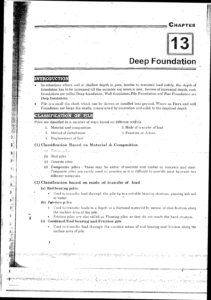
Lateritic Soils Laterite soils are formed by decomposition of rock. removal of bases and silica, and accumulation of iron oxide end aluminium oxide. The presence of iron oxide gives these soils the characteristic red or pink colour These are residual seals formed from basalt. Laterite soils exist in the central, southern and eastern India. Laterite soils are soft and can be cut with a knife when wet. However, these harden with passage of time The plasticity of the laterite soils decreases with depth as they approach the parent rock. The soils, especially those which contain iron oxide, have relatively high specific gravity Desert Soils A large part of Rajasthan and adjoining states is covered with sand dunes. In this area, a conditions exist, with practically little rainfall Dune sand is uniform in gradation. The size of the particles is in the range of fine sand. The sand is non-plastic and highly pervious. As the sand is generally in loose condition, it requires densification to increase its strength Marine Deposits Marine deposits are mainly confined along a narrow belt near the coast. In the south-west co of India, there are thick layers of sand above deep deposits of soft marine clays The marine deposits have very low shearing strength and are highly compressible. They contain a large amount of organic matter. The marine clays are soft and highly plastic.
NAMES OF VARIOUS TYPES OF SOILS : Bentonite. It is a type of clay with a very high percentage of clay mineral montmorillonite. highly plastic clay, resulting from the decomposition of volcanic ash. It is highly water absorbent has high shrinkage and swelling characteristics Black Cotton Soil : It is a residual soil containing a high percentage of the clay mineral montmorillonite It has very low bearing capacity and high swelling and shrinkage properties
Boulders: Boulders are rock fragments of large size. more than 300 mm in size. Calcareous soils These soils contain a large quantity of calcium carbonate. Such soils effect when tested with weak hydrochloric acid is a type of soil which contains gravel, sand and silt. The particles are cemented by calcium carbonate Clay: It can be made plastic by adjusting the water content. lt exhibits considerable strength w dry. Clay is a fine grained cohesive soil. The particle size is less than 0.002 mm Organic clay contains finely divided organic matter and is usually dark grey or black in colour a conspicuous odour. Organic clay is highly compressible and its strength is very high when dry Cobbles Cobbles tire large size particles in the range of SO nm to 300 mm earth Diatoms are minute unicellular marine organisms. Diatomaceous earth fine, light grey, soft sedimentary deposit of the solicitous remains of skeletons of diatoms clays These are special type of clays which deflocculates in still water. Such soil exposed to low-velocity water. Susceptibility to dispersion depends upon the cations in the soil pore water.
Dune sands : These are wind-transported soils. These are composed of relatively form particles of fine to medium sand: Expansive clays These are prone to large volume changes as the water content is changed These- soil contain the mineral montmorillonite. Fills: All man-made deposits of soil and waste-materials are called fills. These are the soil embankments raised above the ground surface. Engineering properties of fills depend upon the type of soil, its water content and the degree of compaction Gravel Gravel is a type of coarse-grained soil. The particle size ranges from 4.75 mm to 80 mm It is a cohesionless material
Hardpans : Hardpans are types of soils that offer great resistance to the penetration of drilling tools during soil exploration. The soils are designated hardpans regardless of their particle size. These are generally dense, well-graded, cohesive aggregates of mineral particles. Hardpans do not disintegrate when submerged in water. Humus: It is a dark brown, organic amorphous earth of the topsoil. It consists of partly decomposed vegetable matter. It is not suitable for engineering works Laterites Laterites are residual soils formed in tropical regions. Laterites are very soft when freshly cut but become hard after long exposure. Hardness is due to cementing action of iron oxide and aluminium oxide. These soils are also called lateritic soils Loam It is a mixture of sand, silt and clay Loess It is a wind blow m deposit of silt. It is generally of uniform gradation, with the particle between 0.01 to 0.05 mm. It consists of feldspar particles, cemented with calcium carbon or iron oxide. When wet, it becomes soft and compressible because cementing action is lost. A low deposit has a loose structure with numerous root holes which produce vertical cleavage
DOWNLOAD LINK : IES MASTER Soil Mechanics Study Material for GATE PSU IES GOVT EXAMS Free Download PDF
DISCLAIMER : THIS WEBSITE IS NOT THE ORIGINAL PUBLISHER OF THIS BOOK ON NET. THIS E-BOOK HAS BEEN COLLECTED FROM OTHER SITES ON INTERNET. ALL THE RIGHTS ON THIS BOOK BELONGS TO IES MASTER ACADEMY.
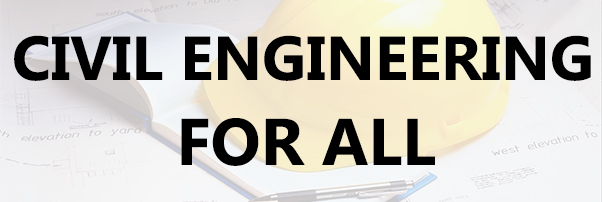
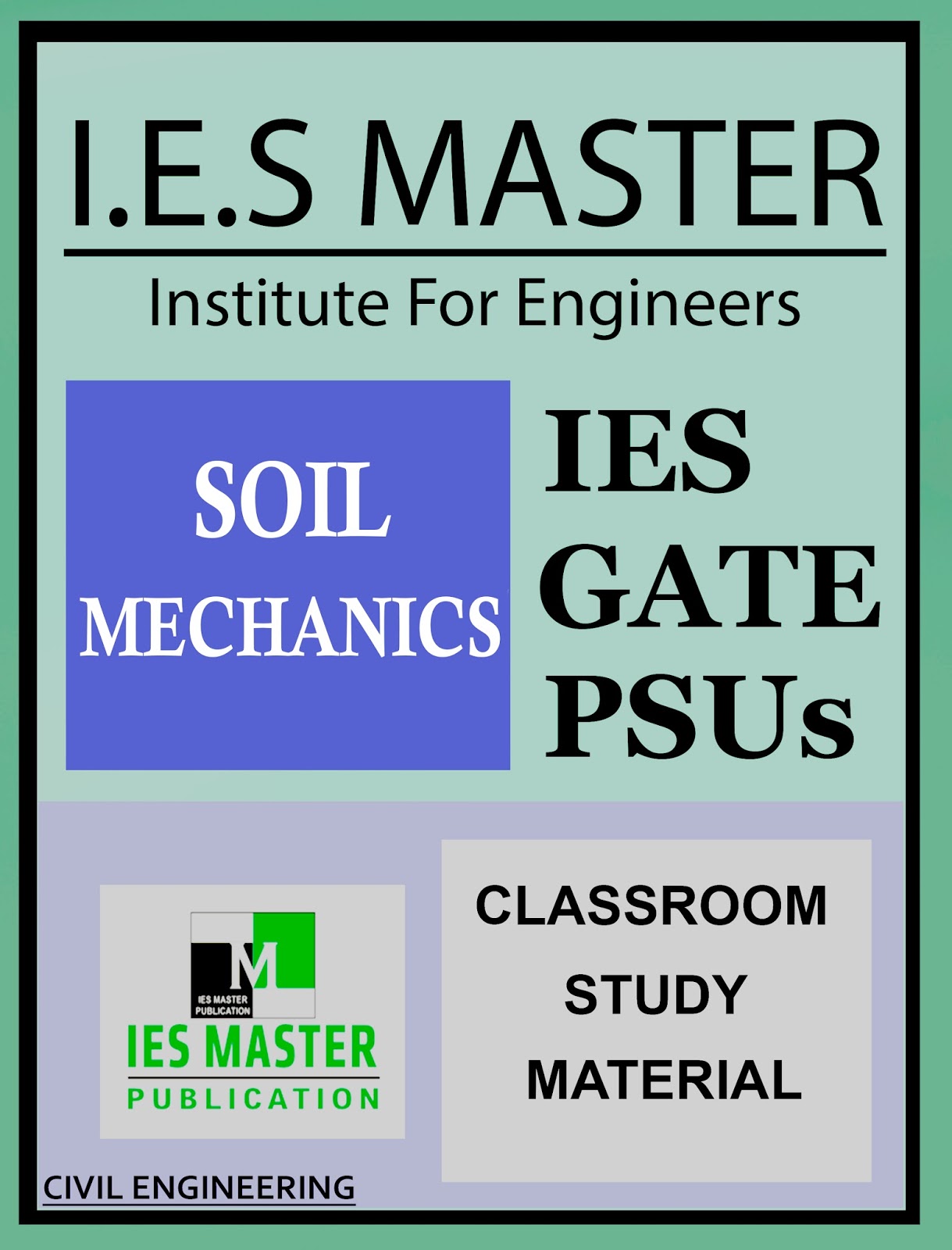






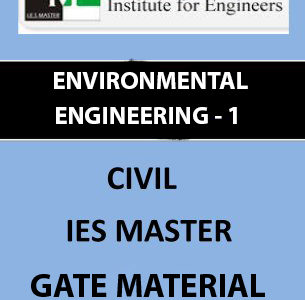


![[GATE - PSU - GOVT EXAMS] STEEL STRUCTURES IES MASTERS Study Material Main Page 1](https://civilenggforall.com/wp-content/uploads/2017/07/GATE-PSU-GOVT-EXAMS-STEEL-STRUCTURES-IES-MASTERS-Study-Material-Main-Page-1-400x300.jpeg)









